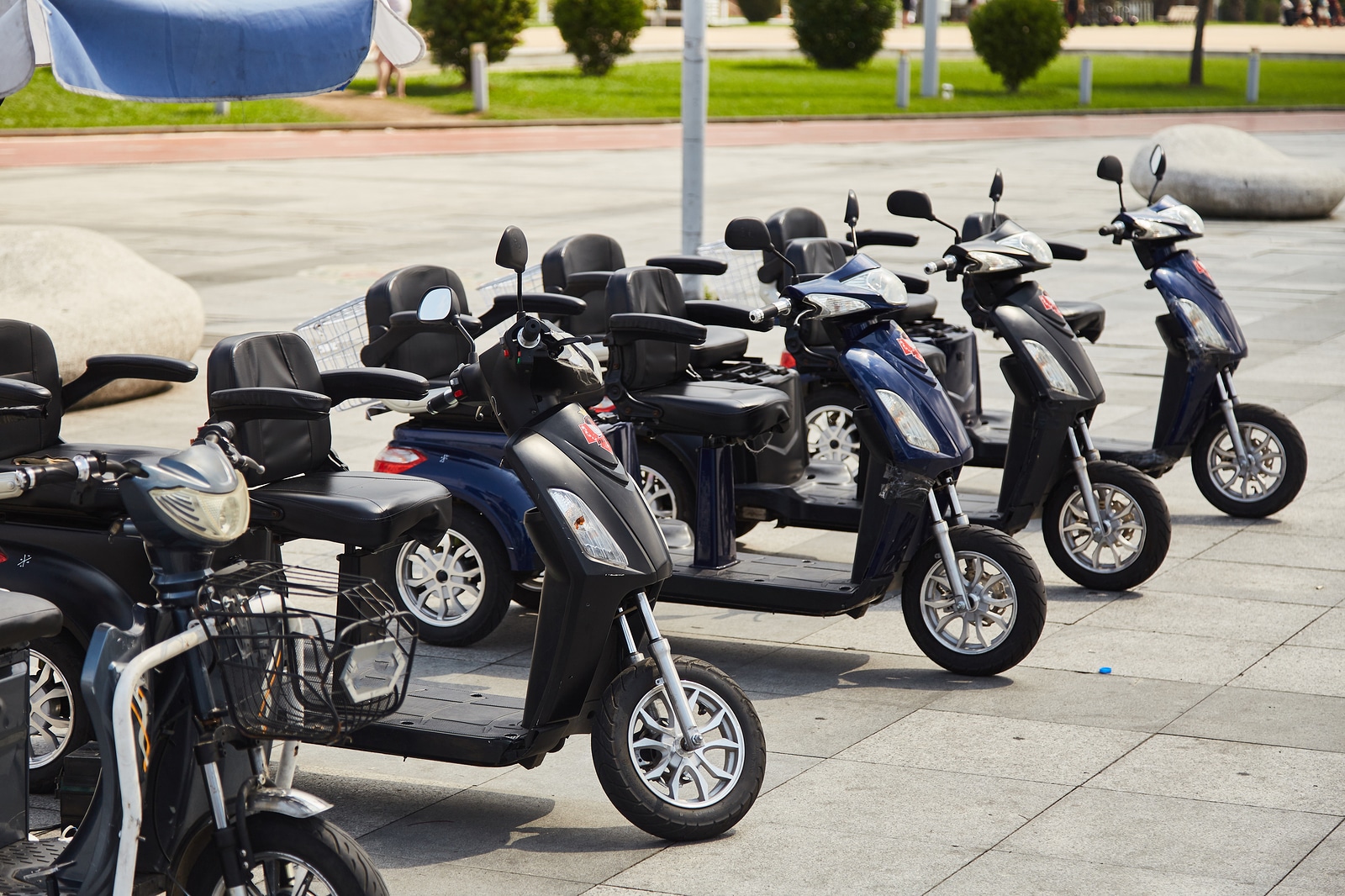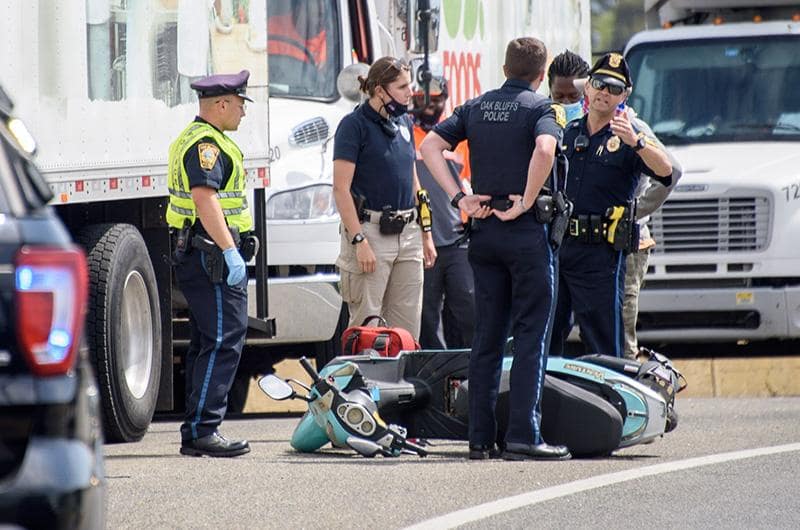Moped Accidents in California and detailed FAQs
Whether you've been injured in an accident, are dealing with a personal injury claim, or facing another legal issue, Mendez & Sanchez APC is here to fight for you. Contact us today for a free, no-obligation consultation.
Call Us Now
What are Mopeds and Why are They Popular in California?
If you live in California or plan to visit the Golden State, you may have noticed the increasing popularity of mopeds. These small, lightweight, and affordable vehicles are an excellent alternative to cars, especially in urban areas with heavy traffic and limited parking space. However, riding a moped can also be risky, especially if you're not familiar with the rules of the road or the potential hazards. In this article, we'll explore the topic of moped accidents in California, looking at the causes, consequences, and prevention strategies that can help you stay safe on the road.
Before we dive into the topic of moped accidents in California, let's first define what mopeds are and why they're becoming more popular in the state. A moped is a type of low-powered motorcycle with an engine capacity of less than 50cc and a top speed of around 30mph. Mopeds are also known as motorized bicycles, motor scooters, or simply scooters. They are relatively easy to operate, requiring only a driver's license or a moped license, which is available to riders aged 16 and above.
The popularity of mopeds in California can be attributed to several factors, including their affordability, fuel efficiency, and convenience. Mopeds are cheaper to buy and maintain than cars, and they consume less gas or electricity per mile. They can also navigate through narrow streets, bike lanes, and parking spaces that are inaccessible to cars. Additionally, mopeds offer a fun and adventurous way to explore the city, especially for tourists who want to see more than just the typical tourist attractions.
Mopeds have become a popular mode of transportation in California, offering an economical and efficient way to navigate the bustling streets of cities like Los Angeles, San Francisco, and San Diego. While mopeds offer convenience and flexibility, they also pose a significant risk on the roads. Moped accidents in California have been on the rise in recent years, raising concerns about the safety of riders and other road users. In this article, we will delve into the world of moped accidents in California, exploring the causes, consequences, and possible solutions to this growing problem.

Moped Accidents in California
Moped accidents in California have become a pressing issue that demands attention from policymakers, law enforcement agencies, and the general public. Understanding the various aspects of these accidents is crucial to devise effective strategies to reduce their occurrence. Let's delve deeper into the subject:
Understanding the Causes
Despite their benefits, mopeds can also pose significant risks, especially when it comes to accidents. According to the California Highway Patrol (CHP), there were 5,101 moped accidents in California in 2020, resulting in 4,557 injuries and 103 fatalities. These numbers represent a significant increase from the previous years, indicating a growing trend of moped accidents in the state. But what are the main causes of moped accidents in California?
Lack of Experience and Training
One of the primary causes of moped accidents in California is the lack of experience and training of the riders. Many moped riders are inexperienced or unlicensed, meaning that they may not be familiar with the rules of the road, the traffic signs, or the safe driving practices. Additionally, some riders may not have adequate training on how to handle a moped in different conditions, such as wet or slippery roads, high speeds, or sudden stops.
Reckless or Impaired Driving
Another significant cause of moped accidents in California is reckless or impaired driving. Some moped riders may drive under the influence of drugs or alcohol, which can impair their judgment, coordination, and reaction time. Others may engage in risky behaviors, such as speeding, weaving through traffic, or ignoring traffic signals, which can increase the likelihood of a collision. Additionally, some riders may ride without a helmet or other protective gear, making them more vulnerable to head injuries or other severe injuries.
Poor Visibility or Road Conditions
The visibility and road conditions are also contributing factors to moped accidents in California. Mopeds are smaller and less visible than cars, making them harder to spot for other drivers, especially at night or in adverse weather conditions. Additionally, some roads or intersections may not be designed to accommodate mopeds, such as narrow or winding roads, steep hills, or blind corners.
1. Factors Contributing to Moped Accidents
Moped accidents can result from a variety of factors. It's essential to identify these factors to create awareness and promote preventive measures:
- Lack of rider experience and training
- Distracted driving, such as texting or using mobile devices
- Failure to adhere to traffic rules and regulations
- Speeding and reckless driving
- Poor road conditions and inadequate infrastructure
2. Consequences of Moped Accidents
Moped accidents can have severe consequences for all parties involved. Let's explore the potential outcomes:
a) Injuries to Riders
Moped riders are particularly vulnerable to injuries due to their limited protection. Common injuries include:
- Fractures and broken bones
- Head and brain injuries
- Spinal cord injuries
- Road rash and severe abrasions
- Internal injuries
b) Impact on Other Road Users
Moped accidents not only affect riders but also pose risks to pedestrians, cyclists, and other drivers. The consequences can be dire, leading to:
- Serious injuries or fatalities of other road users
- Psychological trauma for witnesses and survivors
- Traffic congestion and delays

3. Efforts to Promote Road Safety
Addressing the rising number of moped accidents in California requires a comprehensive approach involving multiple stakeholders. Here are some initiatives that can help improve road safety:
a) Enhanced Rider Education and Licensing
Implementing rigorous training programs and mandatory licensing requirements can ensure that moped riders are equipped with the necessary skills and knowledge to safely navigate the roads.
b) Increased Law Enforcement
Strict enforcement of traffic laws and regulations, including speed limits and helmet usage, can act as a deterrent and promote safer riding practices.
c) Infrastructure Improvements
Investing in better road infrastructure, including designated lanes for mopeds, can enhance safety and reduce the risk of accidents.
d) Public Awareness Campaigns
Raising awareness about moped safety through public campaigns can educate both riders and other road users about the risks involved and encourage responsible behavior.



